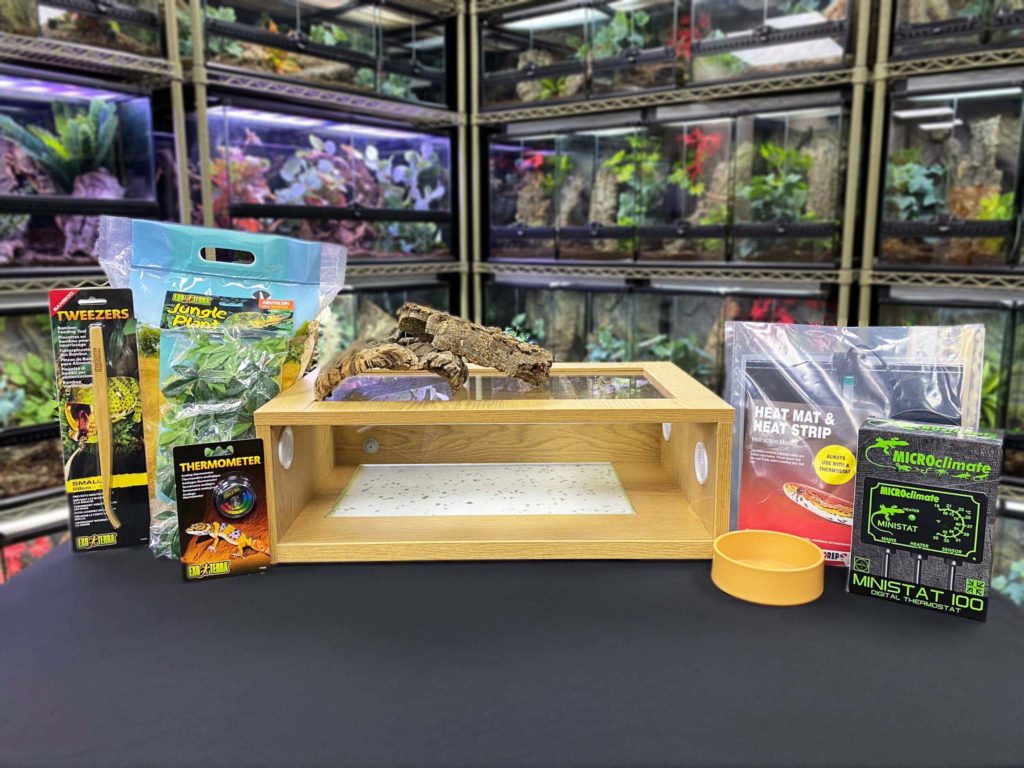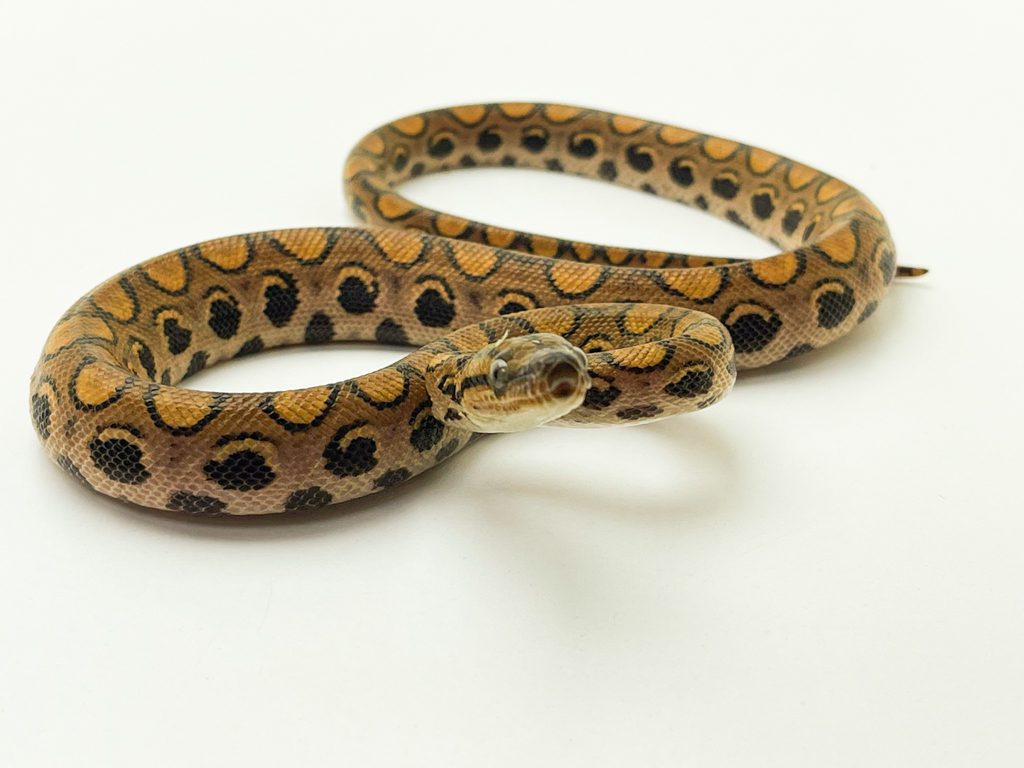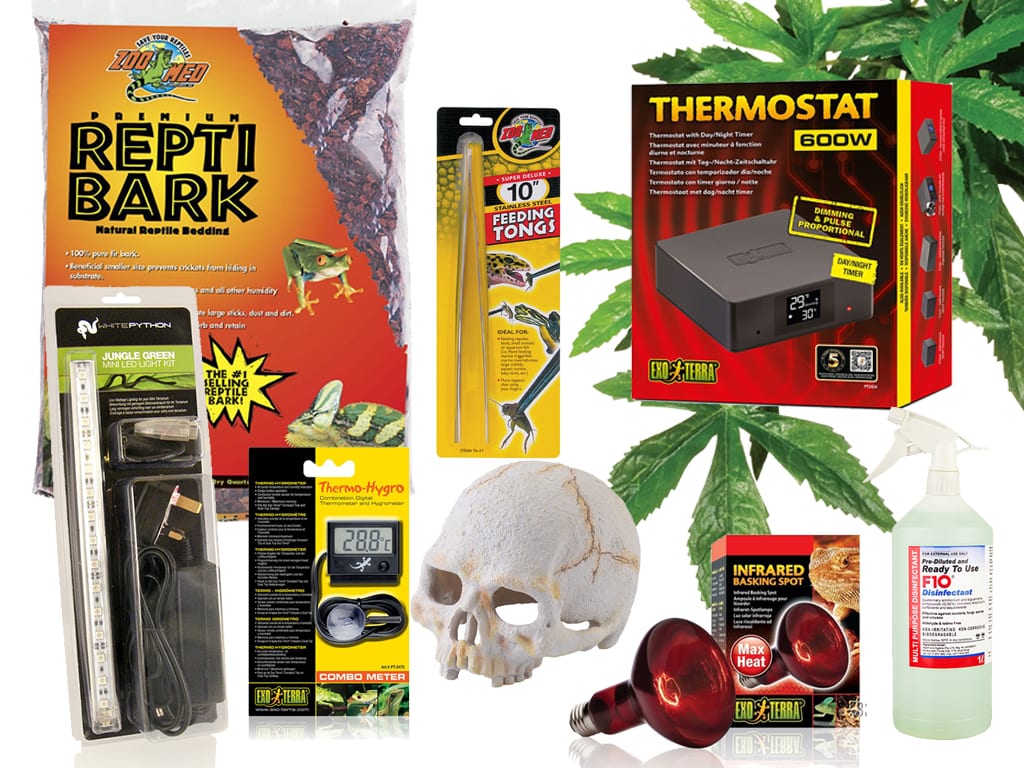
Rainbow Boa
Care Sheet

Rainbow Boa’s, like other Boas are live bearing snakes meaning that they do not produce eggs. Instead, mothers produce egg sacks inside and babies are born from these after being incubated inside the mother.
Because Rainbow Boas are from South America, they require a very humid environment. Babies require almost 90% humidity whilst adults are happy with around 75-80%. This can be achieved using moss hides along with a forest substrate which retains humidity.
There are more than 40 species of Boa known across the world. Brazilian Rainbow Boas are known for the striking iridescence on their scales when the light hits them.
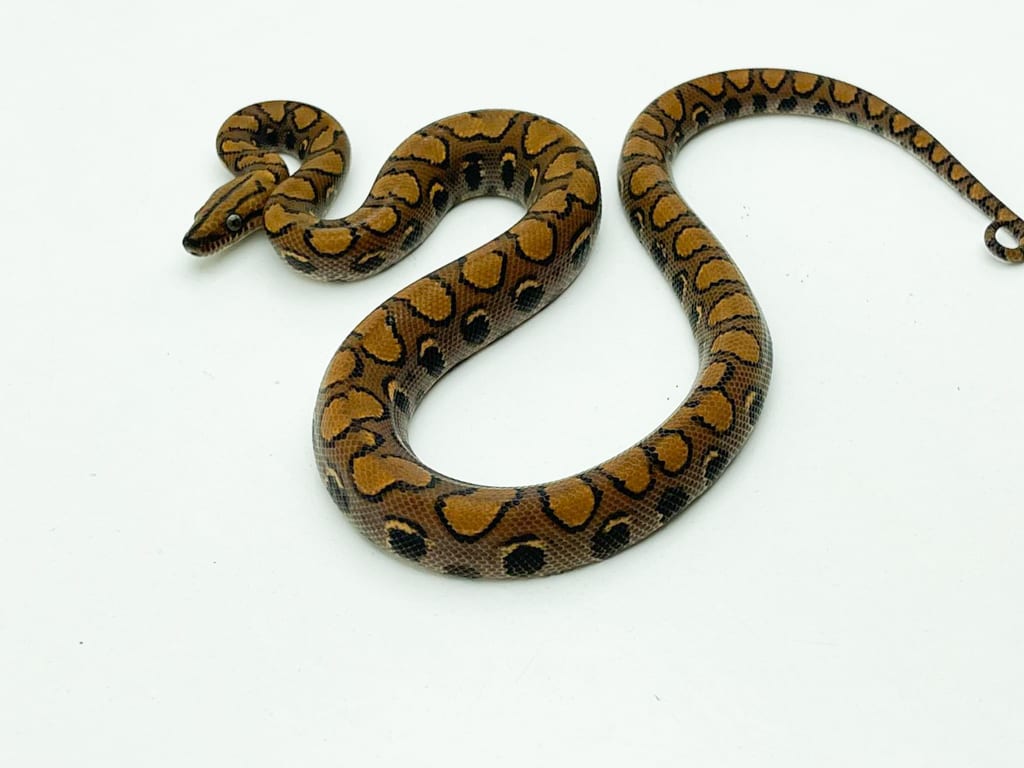


HANDLING YOUR RAINBOW BOA
When handling your rainbow boa it is important to use an antibacterial hand wash before and after touching your animal. This ensure that no parasites or bacteria is passed between you and your snake. When handling always use a hook to gently stroke the snakes head to let it know you are going to touch it- we call this tap-training. Over time, the snake is able to distinguish between feeding and handling times by not expecting food once it has been stroked gently on the nose. This should be continued throughout the snakes life.
Gently pick the snake up by scooping around 2/3 of the way down the snakes body. Don’t restrict the snake and try not to hold the first 3rd of the snake where the vital organs are, this can cause discomfort to your snake. Always leave 48 hours or more after feeding your snake before handling to prevent bites and discomfort to your animal which can cause regurgitation. We advise not to handle your snake 48 hours before feeding- especially for fussy feeders.
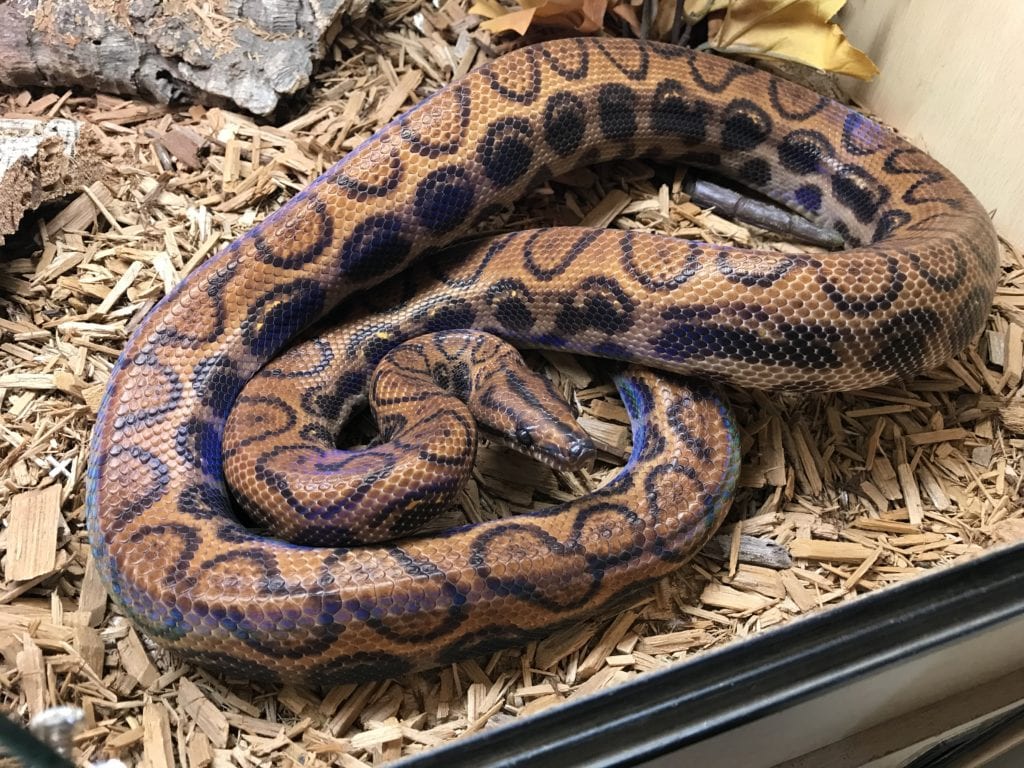

SEXING YOUR RAINBOW BOA
Male and female snakes may differ between sizes and length of tail, but to get an accurate gender there are 2 methods.
1- probe your snake by sliding the probe under the vent towards the tail. If the probe goes in a small amount then the snake is female, if the snake is male the probe will slide further, this is where the hemipenes are located.
2- ‘pop’ the snake by holding the snakes tail in one hand and gently rolling towards the vent with the other exposing the genitals.
Snakes can be badly damaged during sexing and should only be sexed by a professional.



HEALTH CHECK
It is important to regularly check the health of your rainbow boa and there are a few common diseases and disorders to look out for.
Eyes– check the eyes are clear of infection, discharge or stuck eye caps (these can occur from a dry shed, increase the humidity or place snake on soak periodically until eye caps come off) you can provide a moss hide for your snake close to shedding time or soak the snake for 20 minutes at a time until the shed comes off.
Skin– check the skin for black spots or raised scales which can be a sign of mites. Mites can usually be seen around the eye socket and under the chin. Mites can be treated using a number of chemical products or for a natural cure, Taurrus predatory mites can be used regularly for prevention and treatment.
Respiratory Infections– RI is a term for a broad spectrum of infections in the lungs and respiratory system. It is generally caused by ill health along with damp or cold conditions and can be treated with a nebuliser. We always recommend seeing the vet if you suspect RI, however it is extremely rare and is not usually the actual cause of the symptoms that are seen.








ADVICE FOR LIFE!
When you buy your Pet & Housing from us!
Priority Boarding | Advice available face to face, via Telephone, Facebook Chat, Email, Instagram

